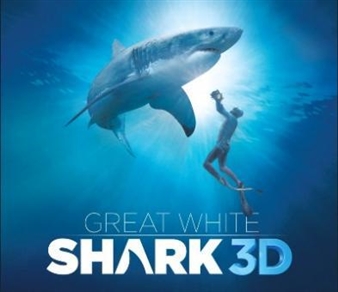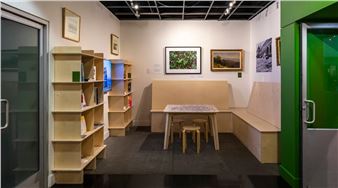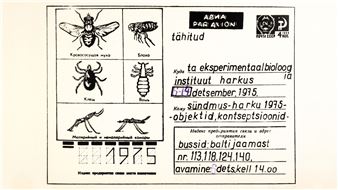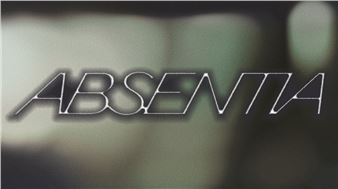Krista MГ¶lder and Alis MГӨesalu: A Temporary Thing
Something temporary: an instant, fragile and passing. Photography disrupts the temporary by capturing the moment as a static image: a grimace which has not yet managed to form a smile, the solidified waves undulating towards the horizon, the moment when the feet of a runner donвҖҷt touch the ground.
Krista MГ¶lder and Alis MГӨesalu call stasis into question and offer space for what is hidden underneath. The static begins to flicker, the tension between motion and immobility, visible and invisible is highlighted.
I remember a story from a book about a person who got caught in a snowstorm on a vast field of ice and was led in the right direction by their gut feeling, an internal guide which might have been influenced by physics: the barely perceptible coldness of ice crystals on one cheek, the changes of light which the eye can scarcely sense. These are movements which can be registered only by the hypersensitive. This idea of a knowledge, that is first captured by the body and not by the world view of rational reasoning, might have been a belletristic exaggeration. But the cognition of the correct direction can arrive to us through the hairs on the back of our necks.
The works by MГ¶lder and MГӨesalu suggest an intermediacy, a transformation, trying to capture the moment between вҖңnot yetвҖқ and вҖңalready passedвҖқ. The time and the space reveal their amorphous visage. A thin plastic film might become the wing of a model airplane. A silver mirror which does not yet contain the photographic image or from where it might already have slipped away somewhere else, back into nothingness. A propeller which does not rotate and is stationary. Or does the space around it move instead? It takes a lot of patience, barely breathing, to create the ethereal.
When you forget yourself while you are observing something, your breathing becomes slower. The body freezes and becomes utter attention; the вҖңmeвҖқ is glued together with the thing observed, it fades into the surroundings, disappears. A new вҖңmeвҖқ emerges which is broader than the limits of oneвҖҷs own skin, of oneвҖҷs name, an assemblage which has inseparably been integrated into the world.
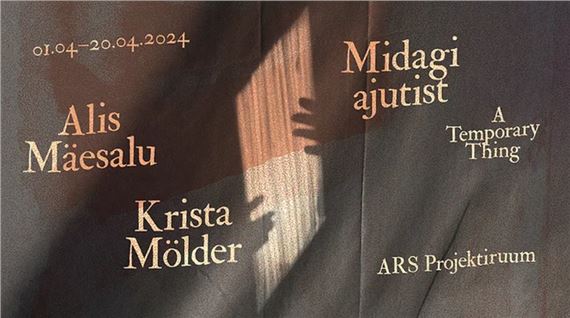
Recommended for you
Something temporary: an instant, fragile and passing. Photography disrupts the temporary by capturing the moment as a static image: a grimace which has not yet managed to form a smile, the solidified waves undulating towards the horizon, the moment when the feet of a runner donвҖҷt touch the ground.
Krista MГ¶lder and Alis MГӨesalu call stasis into question and offer space for what is hidden underneath. The static begins to flicker, the tension between motion and immobility, visible and invisible is highlighted.
I remember a story from a book about a person who got caught in a snowstorm on a vast field of ice and was led in the right direction by their gut feeling, an internal guide which might have been influenced by physics: the barely perceptible coldness of ice crystals on one cheek, the changes of light which the eye can scarcely sense. These are movements which can be registered only by the hypersensitive. This idea of a knowledge, that is first captured by the body and not by the world view of rational reasoning, might have been a belletristic exaggeration. But the cognition of the correct direction can arrive to us through the hairs on the back of our necks.
The works by MГ¶lder and MГӨesalu suggest an intermediacy, a transformation, trying to capture the moment between вҖңnot yetвҖқ and вҖңalready passedвҖқ. The time and the space reveal their amorphous visage. A thin plastic film might become the wing of a model airplane. A silver mirror which does not yet contain the photographic image or from where it might already have slipped away somewhere else, back into nothingness. A propeller which does not rotate and is stationary. Or does the space around it move instead? It takes a lot of patience, barely breathing, to create the ethereal.
When you forget yourself while you are observing something, your breathing becomes slower. The body freezes and becomes utter attention; the вҖңmeвҖқ is glued together with the thing observed, it fades into the surroundings, disappears. A new вҖңmeвҖқ emerges which is broader than the limits of oneвҖҷs own skin, of oneвҖҷs name, an assemblage which has inseparably been integrated into the world.

 ARTISTS
ARTISTS









